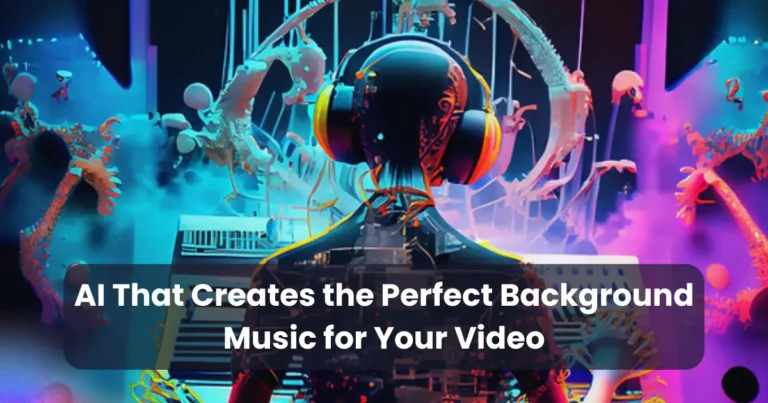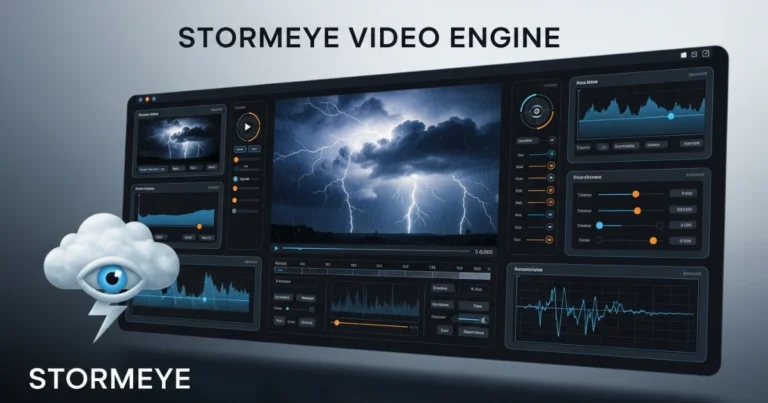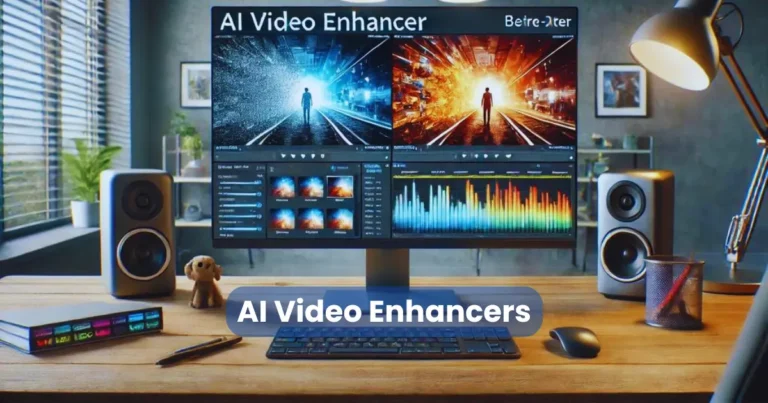AI Video Technology Explained

Contents
In today’s fast-paced digital world, videos dominate every major platform from social media to e-learning and marketing. As demand grows for more content in less time, intelligent automation is becoming essential. That’s where AI video technology explained becomes a key focus. It refers to how artificial intelligence is used to automate, optimize, and elevate video production and editing.
Thanks to AI, creators no longer need to rely solely on manual processes. Instead, smart algorithms assist with tasks such as trimming footage, generating subtitles, enhancing visuals, and even producing complete videos from text prompts. As a result, both professionals and amateurs can produce polished content quickly and at lower costs. Moreover, with AI continuing to evolve, its role in video technology is becoming more impactful by the day.
What Is AI Video Technology?
AI video technology refers to the integration of artificial intelligence into the video creation and editing process. By leveraging machine learning algorithms and data-driven models, this technology allows for automated tasks that once required hours of human labor. These tasks include video editing, scene recognition, voice synthesis, and visual effects enhancement.
Unlike traditional software, AI-powered video tools adapt and improve over time. They learn from vast datasets such as facial expressions, movement patterns, and speech to make real-time decisions. For instance, an AI system can detect and cut silent segments, suggest transitions, or even generate realistic avatars that speak scripted dialogue.
In essence, when AI video technology explained clearly, it becomes evident that its purpose is not just automation but also augmentation. It enhances creativity while minimizing repetitive work. Consequently, content creators can focus more on storytelling and less on time-consuming editing tasks.
How AI Transforms Video Creation
AI has dramatically changed the way videos are produced, edited, and delivered. In the past, video creation was a labor-intensive process that involved multiple stages scripting, filming, editing, post-production, and distribution. Today, AI simplifies and accelerates many of these steps, allowing creators to generate high-quality content more efficiently.
For example, AI tools can automatically detect scenes, remove background noise, stabilize shaky footage, and even color-correct videos without manual intervention. These features reduce production time and ensure a professional finish. Moreover, with voice cloning and text-to-video generators, scripts can be turned into fully animated videos sometimes in minutes.
Furthermore, AI helps personalize video content based on viewer preferences and behavior. Using analytics and machine learning, it becomes easier to tailor content that resonates with specific audiences. As a result, engagement increases and content performance improves.
When AI video technology explained thoroughly, it’s clear that its role is not only supportive but also transformative. From reducing workloads to unlocking new creative possibilities, AI is shaping the future of video creation across all industries.
Key Features of AI Video Tools
Understanding AI video technology explained in detail requires a closer look at the core features that make these tools so powerful. AI-powered video platforms combine multiple technologies to automate, enhance, and accelerate the video production process. Below are the key features that drive their effectiveness:

1. Automated Video Editing
AI can detect the best scenes, remove unnecessary footage, and apply transitions automatically. This drastically reduces editing time while maintaining video quality.
2. Object and Facial Recognition
With computer vision, AI tools can identify faces, objects, and actions within a video. This enables features like smart tagging, content categorization, and scene analysis.
3. Voice and Text Integration
Natural Language Processing (NLP) allows AI to convert written scripts into voiceovers, add subtitles, or even create entire videos from text input. This feature is especially useful for educational and marketing content.
4. Style and Visual Enhancement
AI applies filters, color grading, and stylistic effects automatically. It can even replicate cinematic looks or match branding guidelines to keep content consistent.
5. Real-Time Processing
Changes such as lighting correction, audio balancing, and video stabilization happen in real time, making live-streaming or rapid content creation much more practical.
6. Personalization and Recommendation
Based on viewer data and engagement metrics, AI tools can suggest edits, content direction, or video thumbnails that are more likely to perform well.
Together, these features ensure that AI-driven video tools are not just about speed they are about smart, data-informed creativity. Clearly, when AI video technology explained feature by feature, its potential for revolutionizing content creation becomes undeniable.
Applications of AI Video Technology
To see the true impact of this innovation, it’s helpful to explore real-world applications of AI video technology. When AI video technology explained through its diverse use cases, its value across industries becomes even more evident. From entertainment to healthcare, AI is reshaping how video is produced, consumed, and analyzed.

1. Marketing and Advertising
AI enables marketers to create personalized video ads based on user behavior, demographics, and interests. As a result, engagement rates and conversion metrics improve significantly.
2. Education and E-Learning
With AI-generated avatars, automated subtitles, and multilingual voiceovers, educational videos can be created faster and made accessible to a wider audience. Learning experiences are enhanced through interactive and adaptive video content.
3. Media and Entertainment
AI is used to edit film footage, generate special effects, and even write scripts. Platforms like YouTube and TikTok rely on AI to recommend videos and optimize content delivery.
4. Healthcare and Medical Training
Surgical procedures, diagnostics, and patient care videos are analyzed using AI to extract insights, support research, and improve training programs. Real-time video interpretation can also assist in telemedicine.
5. Security and Surveillance
AI is integrated into surveillance systems to detect unusual activity, recognize faces, and flag potential threats. Video footage is processed in real time, improving safety and response times.
6. Corporate Communication
Businesses use AI to produce training videos, internal announcements, and customer support content efficiently. These tools reduce the need for large media teams while maintaining professional quality.
Clearly, when AI video technology explained through its applications, it’s evident that the possibilities are vast. Its adaptability across sectors makes it a versatile solution for both technical and creative challenges.
Benefits for Businesses and Content Creators
The use of AI in video production offers significant advantages to both companies and individual creators. When AI video technology explained in terms of its practical benefits, it becomes clear why adoption rates continue to grow rapidly.

1. Faster Production Time
AI tools speed up video creation by automating tasks like editing, trimming, and captioning. This allows businesses to respond quickly to trends and creators to publish content more frequently.
2. Reduced Costs
By minimizing the need for large production teams or expensive equipment, AI helps lower overhead. Budget-friendly tools give startups and solo creators the same production power once reserved for big studios.
3. Higher Content Quality
With features like auto-correction, stabilization, and enhancement, video output is consistently polished. AI ensures professional-grade results even when resources are limited.
4. Enhanced Personalization
Content tailored to individual preferences performs better. AI analyzes viewer data and adjusts video elements accordingly improving engagement, watch time, and retention.
5. Global Accessibility
Automatic translation, voiceover generation, and subtitle creation allow businesses and creators to reach international audiences effortlessly, breaking down language barriers.
6. Scalability and Consistency
Once AI is trained, it can replicate tasks with the same quality across hundreds of videos. This is especially useful for companies creating branded or educational content at scale.
When AI video technology explained from a benefits perspective, its ability to democratize video creation and boost productivity becomes evident. It empowers creators to focus on ideas while AI handles execution with speed and precision.
Future of AI Video Technology
As artificial intelligence continues to evolve, so does its influence on the video production landscape. When AI video technology explained with a forward-looking perspective, the future reveals promising advancements that are likely to redefine how content is created and consumed.

1. Hyper-Realistic Content Creation
AI is expected to generate ultra-realistic synthetic videos, including deepfakes and AI-generated avatars that closely mimic human gestures and speech. While this opens doors for immersive storytelling, ethical guidelines will become crucial.
2. Real-Time Interactive Videos
Soon, viewers may not just watch but interact with video content in real time. AI will enable adaptive storytelling, where scenes shift based on viewer responses revolutionizing education, gaming, and marketing.
3. Enhanced Creativity Tools
AI will offer even more intuitive tools for creators, including real-time mood matching, intelligent scene suggestions, and automatic visual storytelling. This will allow even beginners to create compelling videos without technical expertise.
4. Cross-Platform Automation
With seamless integration across platforms, AI will automate video formatting, captioning, and distribution ensuring that content performs optimally on every channel, from Instagram Reels to YouTube Shorts.
5. Stronger AI-Ethics Frameworks
As AI-generated content becomes more mainstream, regulations and ethical standards will shape its development. Transparency in AI usage and content authenticity will be key focus areas for future platforms.
Clearly, when AI video technology explained in the context of what lies ahead, it’s evident that the future will bring smarter, more intuitive, and highly creative tools. These innovations will not just enhance production they will redefine the very way we experience video.
Conclusion
In today’s fast-paced digital world, the demand for engaging, high-quality video content continues to rise. As AI video technology explained throughout this article demonstrates, artificial intelligence is no longer just an emerging trend it is a transformative force across industries. By automating complex tasks, enhancing creativity, and enabling real-time personalization, AI empowers both businesses and individual creators to produce smarter, faster, and more impactful content.
With continued advancements on the horizon, AI video tools will become even more intuitive, accessible, and powerful. While challenges such as ethical concerns and data privacy must be addressed, the potential benefits far outweigh the limitations. Whether you’re a seasoned filmmaker, a marketing strategist, or a beginner content creator, embracing AI in your video production process is no longer optional it’s essential. In summary, when AI video technology explained comprehensively, its role becomes clear: to innovate, streamline, and elevate the way we tell stories through video.






